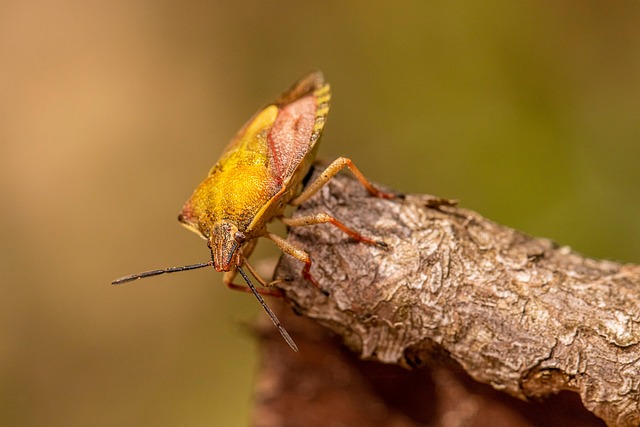Bed bugs quickly spread through homes and commercial spaces, targeting sleep areas and feeding on human blood. Effective residential bed bug control involves identifying the source and extent of infestations, using a combination of chemical treatments (like insecticides) and non-chemical methods (such as heat treatment, sealing entry points, and improved sanitation). Modern techniques prioritize eco-friendly solutions like heat treatment and natural pesticides. After successful treatment, preventing reinfestation is crucial through thorough cleaning, removing hiding spots, sealing entry points, using protective encasements, and regular inspections.
Bed bugs are relentless invaders, infesting homes and causing sleepless nights. But fear not! Effective treatments exist to eliminate these pesky critters. This comprehensive guide explores both traditional and modern methods for residential bed bug control, armed with knowledge on signs, causes, and post-treatment strategies. Discover eco-friendly solutions and gain insights to prevent reinfestation, ensuring a peaceful slumber once more.
Understanding Bed Bug Infestations: Signs and Causes
Bed bug infestations can quickly turn from an inconvenience to a significant problem, affecting both homes and commercial spaces alike. Understanding how these infestations occur is the first step towards effective residential bed bug control. Bed bugs are small, wingless insects that feed on human blood, typically targeting areas where people sleep or spend significant time. They are expert hitchhikers, often traveling in luggage, furniture, or clothing, making them easy to unknowingly transport into homes.
Recognizing the signs of a bed bug infestation is crucial for prompt action. These include finding small red bites on the skin, often in clusters, and seeing tiny dark spots or stains on bedding or mattresses, which are actually bug excrement. Live bugs may also be visible, resembling tiny flat insects with a distinctive shape resembling an apple or a lentil. While bed bugs can thrive in various environments, they prefer warm, moist conditions and are commonly found in cracks, crevices, and seams of mattresses, walls, and furniture. Identifying the source and extent of the infestation is key to implementing the most effective residential bed bug control methods.
Traditional Residential Bed Bug Control Methods
In traditional residential bed bug control, professionals often employ a multi-faceted approach. This typically involves a combination of chemical treatments and non-chemical methods. Insecticides that target both adult bugs and their eggs are commonly used, focusing on cracks, crevices, and areas where beds and furniture rest. Heat treatment is another effective method, using high temperatures to kill bed bugs and their offspring in all life stages. This process is particularly beneficial for hard-to-reach areas and can provide a longer-lasting solution compared to chemical treatments.
Non-chemical control methods include sealing entry points, improving sanitation, and using physical barriers. Sealing cracks and gaps around windows and doors helps prevent new bugs from entering the home. Regularly cleaning and vacuuming can remove bed bug debris and eggs while washing linens at high temperatures kills any present bugs. Physical barriers like bed bug covers for mattresses and box springs create a protective layer, trapping existing bugs and preventing them from spreading.
Modern and Eco-Friendly Bed Bug Elimination Techniques
In recent years, the approach to residential bed bug control has evolved significantly, embracing modern and eco-friendly techniques that are both effective and safe. Traditional methods often relied on powerful pesticides, but these can leave behind harmful residues and pose risks to human health and the environment. Today, professionals in residential bed bug control are equipped with a range of alternative solutions.
One such innovation is the use of heat treatment, which involves applying precise temperatures to eliminate bed bugs and their eggs. This method is considered highly effective because it targets all stages of the pest’s life cycle. Additionally, eco-friendly options like natural pesticides derived from plants and essential oils are gaining popularity for their minimal environmental impact while still offering robust bug control. These modern techniques not only address the immediate infestation but also help prevent future reoccurrences, providing homeowners with a safer and more sustainable solution to bed bug problems.
Preventing Reinfestation: Post-Treatment Strategies
After successfully eliminating a bed bug infestation through professional residential bed bug control, preventing reinfestation is crucial to maintain a pest-free environment. Several post-treatment strategies can help fortify your space against future invaders. One key step involves thoroughly cleaning and sanitizing all affected areas, removing any potential hiding spots or food sources that might attract bed bugs. This includes washing linens, vacuuming floors, and sealing cracks or crevices where they could shelter.
Additionally, sealing up entry points like windows and doors with proper sealing materials can significantly reduce the risk of reinfestation. Using bed bug-proof encasements on mattresses and box springs also acts as a physical barrier, preventing new bugs from gaining access. Regular inspections are another vital tool; periodically checking for signs of bed bugs allows for early detection, making it easier to address any recurring issues promptly.
In addressing bed bug infestations, a comprehensive approach combining understanding, modern techniques, and preventive strategies is key. By recognizing signs early and understanding causes, homeowners can take proactive measures with both traditional and eco-friendly methods. Implementing post-treatment strategies ensures these pesky invaders don’t return, providing lasting relief and a peaceful sleep environment. For effective residential bed bug control, knowledge and persistence are your best allies.
